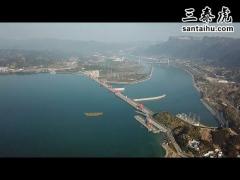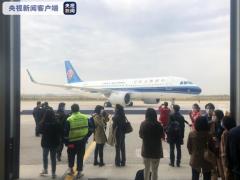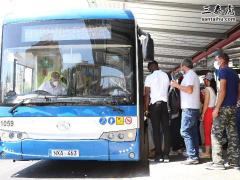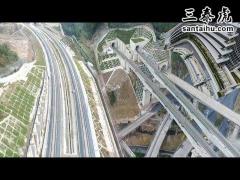今日美国:世界饥饿人口在过去十五年当中首次增加 [美国媒体]
根据联合国的最新数据显示,在2016年,全世界大约有8亿1500万人口——约占全球人口的11%——遭受饥饿。这是这一数据在过去十五年当中首次上升。
World hunger increases for the first time in 15 years
世界饥饿人数在过去十五年当中首次增加
Around the globe, about 815 million people — 11% of the world’s population — went hungry in 2016, according to the latest data from the United Nations. This was the first increase in more than 15 years.
根据联合国的最新数据显示,在2016年,全世界大约有8亿1500万人口——约占全球人口的11%——遭受饥饿。这是这一数据在过去十五年当中首次上升。
Between 1990 and 2015, due largely to a set of sweeping initiatives by the global community, the proportion of undernourished people in the world was cut in half. In 2015, U.N. member countries adopted the Sustainable Development Goals, which doubled down on this success by setting out to end hunger entirely by 2030. But a recent U.N. report shows that, after years of decline, hunger is on the rise again.
在1990年至2015年期间,因为全球范围内一系列消除贫困计划的实施,全世界营养不良的人口比例已经减少过半。在2015年,联合国成员国接受了《可持续发展目标》,该目标计划在上述结果的基础上再次加码,于2030年之前完全消除饥饿问题。但是近期联合国的一份报告显示,在经历了几年的减少之后,饥饿问题有再次抬头的趋势。
As evidenced by nonstop news coverage of floods, fires, refugees and violence, our planet has become a more unstable and less predictable place over the past few years. As these disasters compete for our attention, they make it harder for people in poor, marginalized and war-torn regions to access adequate food.
正如关于洪水、火灾、难民和暴力事件的不停歇的新闻报道所显示的,我们的星球已经在过去几年中已经成为了一个更加不安定和更加不可预测的地方。当这些灾难竞相引发我们注意的时候,它们也在让穷人、被边缘化的人、遭受战火蹂躏地区的人更难以获得足够的食物。
I study decisions that smallholder farmers and pastoralists, or livestock herders, make about their crops, animals and land. These choices are limited by lack of access to services, markets or credit; by poor governance or inappropriate policies; and by ethnic, gender and educational barriers. As a result, there is often little they can do to maintain secure or sustainable food production in the face of crises.
我研究过小农场主和牧场主,以及他们的作物、牲畜和土地。他们的选择因为无法获得服务、市场或贷款,或者因为资金匮乏的政府或不恰当的政策,或者因为种族、性别和教育的障碍而受到了限制。结果,在面临危机的时候,他们往往无法维持生计或可持续的粮食生产。
The new U.N. report shows that to reduce and ultimately eliminate hunger, simply making agriculture more productive will not be enough. It also is essential to increase the options available to rural populations in an uncertain world.
这份新的联合国报道显示,为了减少和最终消除饥饿,仅仅只是提高农业产量是不够的。在一个不确定的世界中,增加农村人口的选择是至关重要的。
Conflict and climate change threaten rural livelihoods
暴力冲突和气候变化威胁农村生计
Around the world, social and political instability are on the rise. Since 2010, state-based conflict has increased by 60% and armed conflict within countries has increased by 125%. More than half of the food-insecure people identified in the U.N. report (489 million out of 815 million) live in countries with ongoing violence. More than three-quarters of the world’s chronically malnourished children (122 million of 155 million) live in conflict-affected regions.
在全世界范围内,社会和政治方面的不稳定趋势正在抬升。自2010年以来,国家之间的冲突已经增加了百分之六十,国家内部的武装冲突已经增加了百分之一百二十五。这份联合国报告中所确认的面临食物保障问题的人口中的一半(8亿1500万人中的4亿8900万)生活在正在爆发暴力冲突的国家中。全世界长期营养不良的儿童中的四分之三(1亿5500万人中的1亿2200人)生活在受到暴力冲突波及的地区。
At the same time, these regions are experiencing increasingly powerful storms, more frequent and persistent drought and more variable rainfall associated with global climate change. These trends are not unrelated. Conflict-torn communities are more vulnerable to climate-related disasters, and crop or livestock failure due to climate can contribute to social unrest.
与此同时,随着全球性的气候变化,这些地区正在遭受越来越强烈的风暴、越来越频繁和持久的旱灾和更多遍的降雨的侵袭。这些趋势不是没有关联的。被冲突所撕裂的社群更容易收到与气候相关的灾难的影响,气候所导致的农作物歉收和牲畜死亡也要归因于社会的不稳定。
War hits farmers especially hard. Conflict can evict them from their land, destroy crops and livestock, prevent them from acquiring seed and fertilizer or selling their produce, restrict their access to water and forage, and disrupt planting or harvest cycles. Many conflicts play out in rural areas characterized by smallholder agriculture or pastoralism. These small-scale farmers are some of the most vulnerable people on the planet. Supporting them is one of the U.N.'s key strategies for reaching its food security targets.
战争对农民的打击尤其沉重。暴力冲突将会把他们从自己的土地上驱逐走,毁坏农作物,杀死牲畜,让他们无法获得种子和肥料,或者无法出售他们的产品,无法获得水资源和草料,打乱了播种或收获的循环。许多暴力冲突是在小农场主或牧场主居住的农村地带爆发的。这些小规模经营的农民是这个星球上最脆弱的一群人。支持他们是联合国实现粮食安全目标的战略的关键一步。
Disrupted and displaced
混乱与背井离乡
Without other options to feed themselves, farmers and pastoralists in crisis may be forced to leave their land and communities. Migration is one of the most visible coping mechanisms for rural populations who face conflict or climate-related disasters.
在无法温饱的情况下,身处危机当中的农场主们和牧场主们可能会被迫离开他们的土地和社群。迁徙是面临危机或与气候相关灾难的农村人口的最常见的应对机制。
Globally, the number of refugees and internally displaced persons doubled between 2007 and 2016. Of the estimated 64 million people who are currently displaced, more than 15 million are linked to one of the world’s most severe conflict-related food crises in Syria, Yemen, Iraq, South Sudan, Nigeria and Somalia.
在全球范围内,难民和国内迁徙人员的数量在2007年至2016年期间已经增加了一倍。在现金大约6400万背井离乡的人中间,有超过1500万人是与发生在叙利亚、也门、伊拉克、南苏丹、尼日利亚和索马里的全球最为严重的与危机相关的粮食危机相关联的。
While migrating is uncertain and difficult, those with the fewest resources may not even have that option. New research by my colleagues at the University of Minnesota shows that the most vulnerable populations may be “trapped” in place, without the resources to migrate.
尽管迁徙是不确定和困难的,但是那些所拥有的资源最少的人甚至都没有选择可选。我在明尼苏达大学的同事们的最新研究表明最容易受到影响的人口可能会被"囚困"在当地,他们缺少移民的资源。
Displacement due to climate disasters also feeds conflict. Drought-induced migration in Syria, for example, has been linked to the conflict there, and many militants in Nigeria have been identified as farmers displaced by drought.
气候灾难所导致的迁徙也会助长冲突。比如在叙利亚,旱灾所引发的迁徙活动便与当地的冲突联系在了一起,尼日利亚的许多武装分子便被认为是因为旱灾而被迫迁徙的农民。
Supporting rural communities
支持农村社群
To reduce world hunger in the long term, rural populations need sustainable ways to support themselves in the face of crisis. This means investing in strategies to support rural livelihoods that are resilient, diverse and interconnected.
为了在较长时段内减少全球的饥饿问题,农村人口需要有可持续性的方式来保证他们在面临危机的时候能够自保。这意味着战略层面的投资,以此来支持农村更有适应性、多样性和互通性的生计。
Many large-scale food security initiatives supply farmers with improved crop and livestock varieties, plus fertilizer and other necessary inputs. This approach is crucial, but can lead farmers to focus most or all of their resources on growing more productive maize, wheat or rice. Specializing in this way increases risk. If farmers cannot plant seed on time or obtain fertilizers, or if rains fail, they have little to fall back on.
许多大规模的粮食安全计划向农民们提供了经过改良的作物或多种的牲畜,更多的肥料和其他必需的投入。这些方式是非常重要的,但是也会导致农民们将他们的绝大多数资源集中在了产出更多的玉米、小麦或水稻上面。集中化的种植方式将会增加风险。如果农民们无法按时获得种子或者肥料的话,如果降雨变的不规律,那么他们将会颗粒无收。
Increasingly, agricultural research and development agencies, NGOs and aid programs are working to help farmers maintain traditionally diverse farms by providing financial, agronomic and policy support for production and marketing of native crop and livestock species. Growing many different locally adapted crops provides for a range of nutritional needs and reduces farmers’ risk from variability in weather, inputs or timing.
农业研究与发展机构、非政府组织和援助项目越来越多地致力于通过提供资金、农业技术和政策上的支持,来帮助农民维持传统的多样化耕作方式,生产和出售当地的作物和牲畜种类。增加不同的适用于当地种植的作物能够提供一系列的营养需求,减少农民因为气候、投入或时间变化所导致的风险。
While investing in agriculture is viewed as the way forward in many developing regions, equally important is the ability of farmers to diversify their livelihood strategies beyond the farm. Income from off-farm employment can buffer farmers against crop failure or livestock loss, and is a key component of food security for many agricultural households.
尽管农业上的投资在许多发展中地区被视为前进的方向,但是同样重要的是农民在耕作地只为多样化其生计战略的能力。来自耕作之外雇佣工作的收入可以缓冲作物歉收或牲畜损失造成的影响,因此在很多农业家庭中也是粮食安全的重要组成部分。
Training, education, and literacy programs allow rural people to access a greater range of income and information sources. This is especially true for women, who are often more vulnerable to food insecurity than men.
训练、教育和扫盲计划能够让农村人口获得更多的收入和信息来源。对于那些相比于男性更加容易收到粮食危机影响的女性而言尤其如此。
Conflict also tears apart rural communities, breaking down traditional social structures. These networks and relationships facilitate exchanges of information, goods and services, help protect natural resources, and provide insurance and buffering mechanisms.
冲突也会撕裂农村社区,打破传统的社会结构。这些网络和关系推动了信息、商品和服务的交换,帮助保护自然资源,提供保险和缓冲机制。
In many places, one of the best ways to bolster food security is by helping farmers connect to both traditional and innovative social networks, through which they can pool resources, store food, seed and inputs and make investments. Mobile phones enable farmers to get information on weather and market prices, work cooperatively with other producers and buyers and obtain aid, agricultural extension or veterinary services. Leveraging multiple forms of connectivity is a central strategy for supporting resilient livelihoods.
在许多地区,增强粮食安全的最佳方式之一就是帮助农民建立与传统和新型社会网络的联系,通过这两种网络,他们能够储备资源、粮食、种子、投入,进行投资。移动电话能够让农民们获得天气信息和市场价格,与其它生产者或买家合作,获得援助或兽医服务。利用不同形式的纽带联系是支持更具适应性的生计模式的一种中心战略。
In the past two decades the world has come together to fight hunger. This effort has produced innovations in agriculture, technology and knowledge transfer. Now, however, the compounding crises of violent conflict and a changing climate show that this approach is not enough. In the planet’s most vulnerable places, food security depends not just on making agriculture more productive, but also on making rural livelihoods diverse, interconnected and adaptable.
在过去的二十年中,全世纪已经团结在一起抗击饥饿。这一努力已经在农业、技术和知识转移领域进行了创新。然而,现在这一由气候变化和暴力冲突所共同导致的危机表明,这种方法是不够的。在这个星球上最脆弱的地区中,粮食安全不仅取决于让农业更加丰产,也取决于让农村生计更佳多样化、更为互通、更具适应性。
版权声明
我们致力于传递世界各地老百姓最真实、最直接、最详尽的对中国的看法
【版权与免责声明】如发现内容存在版权问题,烦请提供相关信息发邮件,
我们将及时沟通与处理。本站内容除非来源注明五毛网,否则均为网友转载,涉及言论、版权与本站无关。
本文仅代表作者观点,不代表本站立场。
本文来自网络,如有侵权及时联系本网站。
图文文章RECOMMEND
热门文章HOT NEWS
-
1
Why do most people who have a positive view of China have been to ...
- 2
- 3
- 4
- 5
- 6
- 7
- 8
- 9
- 10
推荐文章HOT NEWS
-
1
Why do most people who have a positive view of China have been to ...
- 2
- 3
- 4
- 5
- 6
- 7
- 8
- 9
- 10











